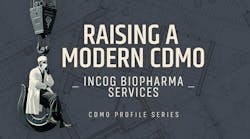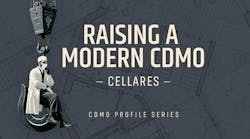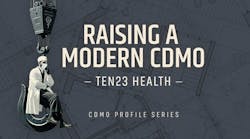The time has come to write a Request for Proposals (RFP) to outsource your latest contract manufacturing project. A well-written RFP and an effectively managed RFP process form the foundation for a productive relationship with the chosen contract manufacturing organization (CMO) — a relationship that may last for the entire lifecycle of your product.
Begin the process with basic reviews of CMOs that potentially have the capabilities you need for this specific project. Numerous published articles offer excellent tips for creating lists of suitable CMOs; usually between five to 10 candidates is a good starting point. Once you have your preliminary list, check the latest regulatory agency (e.g., FDA) databases to see if there are any recent negative reviews. Then contact a business development representative for each CMO remaining on your list. Explain the project in general terms, but do not reveal any confidential information. Make note of the questions they ask and be sure to address each of them in your RFP.
KEY POINTS FOR WRITING AN EFFECTIVE RFP
1. Timeline
Regardless of the product or service being outsourced, you should have a realistic deadline for the deliverables. Use that to develop a timeline for the entire RFP process including proposal reviews, plus all the other essential activities needed before the actual work starts (a Gantt chart can be very useful even at this early stage of outsourcing). Be sure to include time to sign a Confidentiality Agreement (CDA) with each candidate CMO because CDAs frequently take a lot of time. Rushed RFPs and hurried CMO responses are bound to create confusion and misunderstanding.
2. Scope
It is essential that your entire team has input into preparation of the RFP. Each department or discipline may have different visions for the use, quantity and quality attributes of the product or service being outsourced. An effective RFP requests deliverables that can accommodate your entire team’s anticipated needs at this stage of development. Time and money can be wasted if you modify the deliverables after the work has started.
3. Details
Everything in the RFP should be covered by the CDA, so share information freely. Clearly define your deliverables (quantity, quality, batch records, reports, regulatory filings, etc.) and the timelines. Include detailed technical data and a Safety Data Sheet(s). Ask key questions relevant to your specific project, e.g., about tech transfer, process development and engineering runs, equipment purchases and qualification, methods development, stability studies, services outsourced to third parties, packaging, storage and distribution, etc., so you form a complete picture of the entire project at each CMO. Be sure to address the questions raised during your informal contacts with the CMOs.
The CMOs will evaluate your RFP based on the deliverables, timelines, fit with their capabilities, and available capacity so they can quote with reasonable accuracy. It helps to include a small table at the end of the RFP so each CMO can capture the details of their quantities, costs and timelines in a uniform format. Provide contact information for the team member who will be responsible for answering questions about the RFP. The deadline and delivery address for proposals are essential parts of an effective RFP. Have your team review the RFP for clarity and accuracy. Convert the final RFP into Adobe PDF format to add a professional look and to ensure that the recipients can access the file.
[javascriptSnippet]
MANAGING THE RFP PROCESS
Writing the RFP is only the first step in successful outsourcing. You should actively manage the entire RFP process to achieve the best possible outcome.
1. Distribution
The CMOs should receive identical RFP packages, all sent out on the same day. If the RFP is too large for an email attachment, use a CD, USB stick or a secure file sharing site, instead of hard copy. Use overnight delivery services for CDs, USB sticks or hard copies.
2. Update
It is inevitable that a CMO asks a question(s) not addressed in the RFP. Send written responses to such questions, as well as any other updates, to all CMOs. If you meet with one CMO to discuss the RFP, you should meet with all of them.
3. Due Date
Set a realistic deadline with all proposals due no later than a specific date. Too soon and you may get incomplete or inaccurate proposals; too long and your RFP may lose visibility. Three to four weeks is usually a reasonable timeline for proposals, keeping in mind that good CMOs may be working on proposals for several customers at the same time. Be sure to indicate how and where you want proposals submitted, e.g., in PDF format on a CD or USB stick, electronically via email or through a secure file-sharing site or as hard copy.
4. Follow-up
Contact each CMO about midway through the review period to ask if they have any questions about the RFP and to remind them of the submission deadline.
REVIEWING PROPOSALS
The due date has arrived and proposals have been received. Some CMOs may have missed the deadline, so it is good practice to follow up with them. They may not have submitted a proposal because they cannot provide the required services or are unable to meet your timeline. In unusual instances, a CMO may decline to submit a proposal because they have identified a problem or potential hazard that you may not have recognized.
1. Review
CMOs put their time and expertise into writing proposals. Respect their efforts by reading all proposals carefully. CMOs have different experience and may have different approaches to your project. You can mine useful information from virtually every proposal. Be sure to contact the CMO if you have any questions about their proposal or if anything is missing, and it is always a good idea to check their math.
2. Compare
Compile the data from the RFP summary table that each CMO completed to simplify your side-by-side comparisons. Score cards can be useful, especially when more than one person is reviewing the proposals. Create a list of key project attributes, e.g., CMO experience, quality, timelines, regulatory compliance, cost, etc., and have the reviewers assign a grade for each key attribute to all proposals using a scale of 1-5 or 1-10.
3. Price
Costs are important, but should not be the defining factor when selecting a partner. Experience, quality and timelines are as important as price.
4. Selection
Based on the reviews and score cards, select one or a small number of CMOs for in-depth technical discussions, perhaps including a meet/greet visit at their site. Get to know their team. Be sure you can work effectively with them.
5. Decision
Using the proposals, in-depth discussions and a successful QA audit at the highest ranking site, you should be ready to select the CMO that best fits your overall project goals. Once a services agreement has been signed with that CMO, close the loop with the CMOs that were not selected. Feedback is usually well-received and helps the CMOs prepare better proposals for your next project. Be general in your comments, and do not reveal any confidential information obtained from the other CMOs.
These straightforward recommendations should simplify the outsourcing process and allow you to choose the best CMO partner to move your latest invention from the lab toward launch.
ABOUT THE AUTHOR
Ron Herman is senior partner at NexGen Consulting Group, LLC, (www.nexgen.org) and may be contacted at [email protected].





